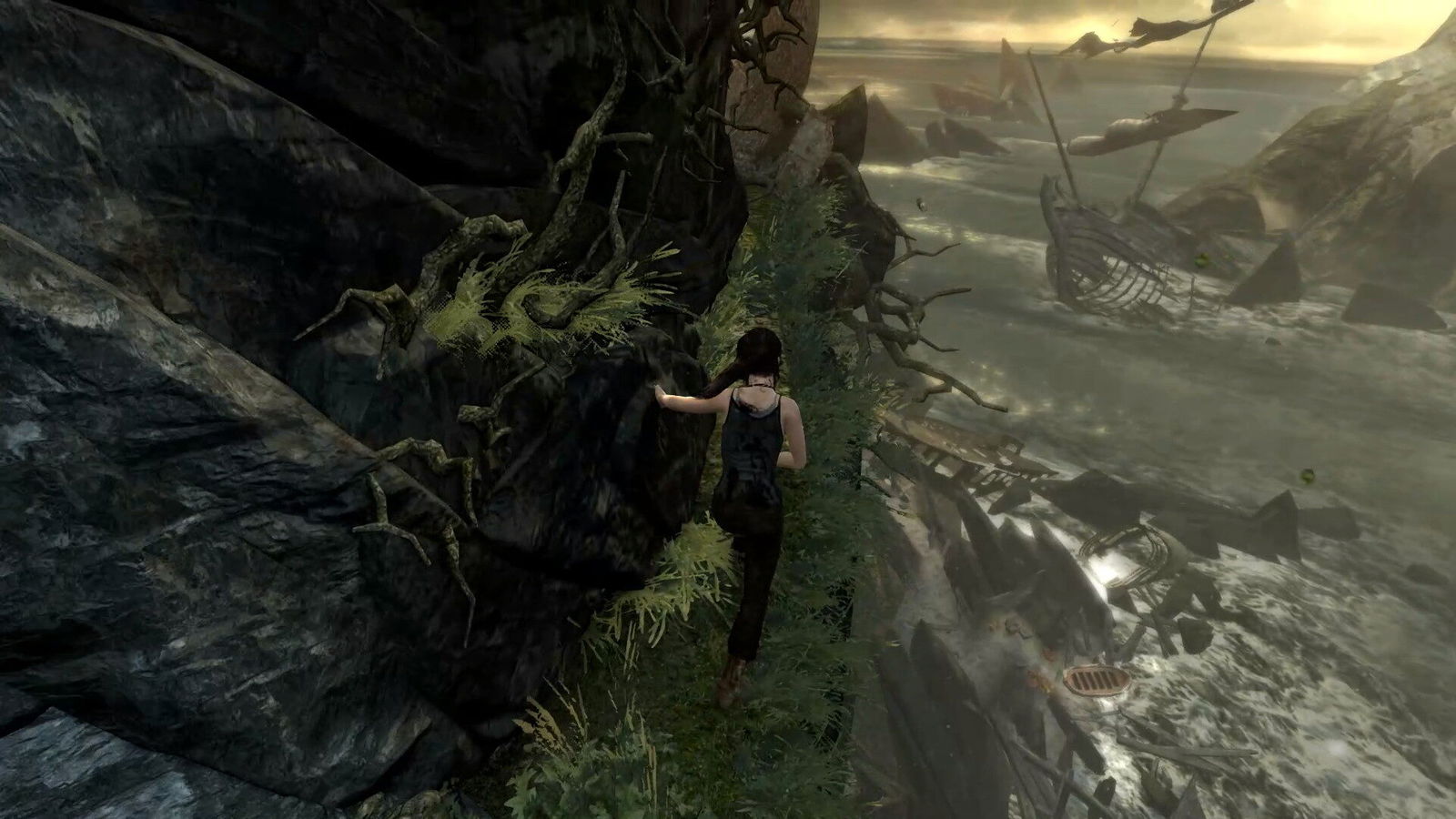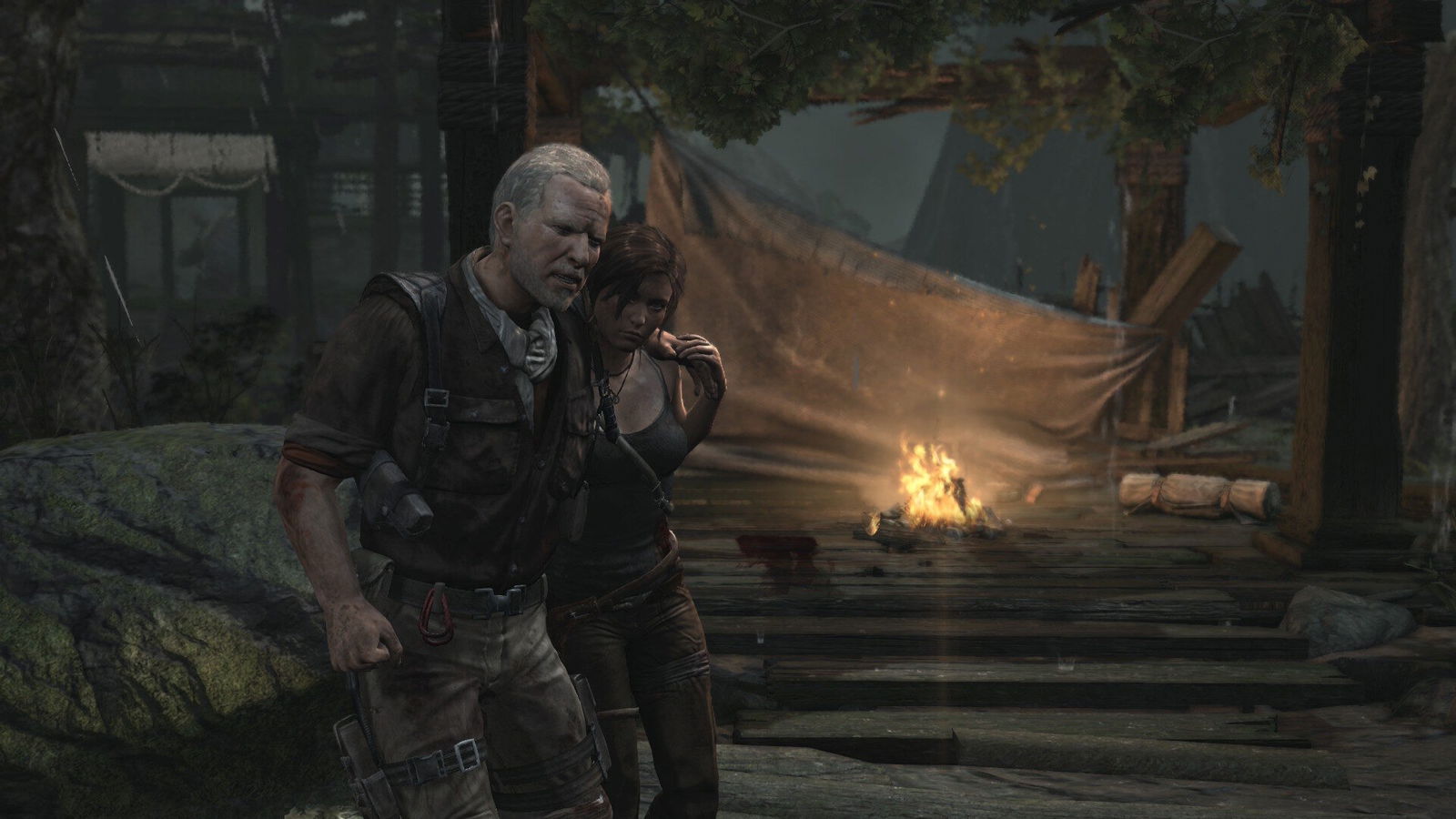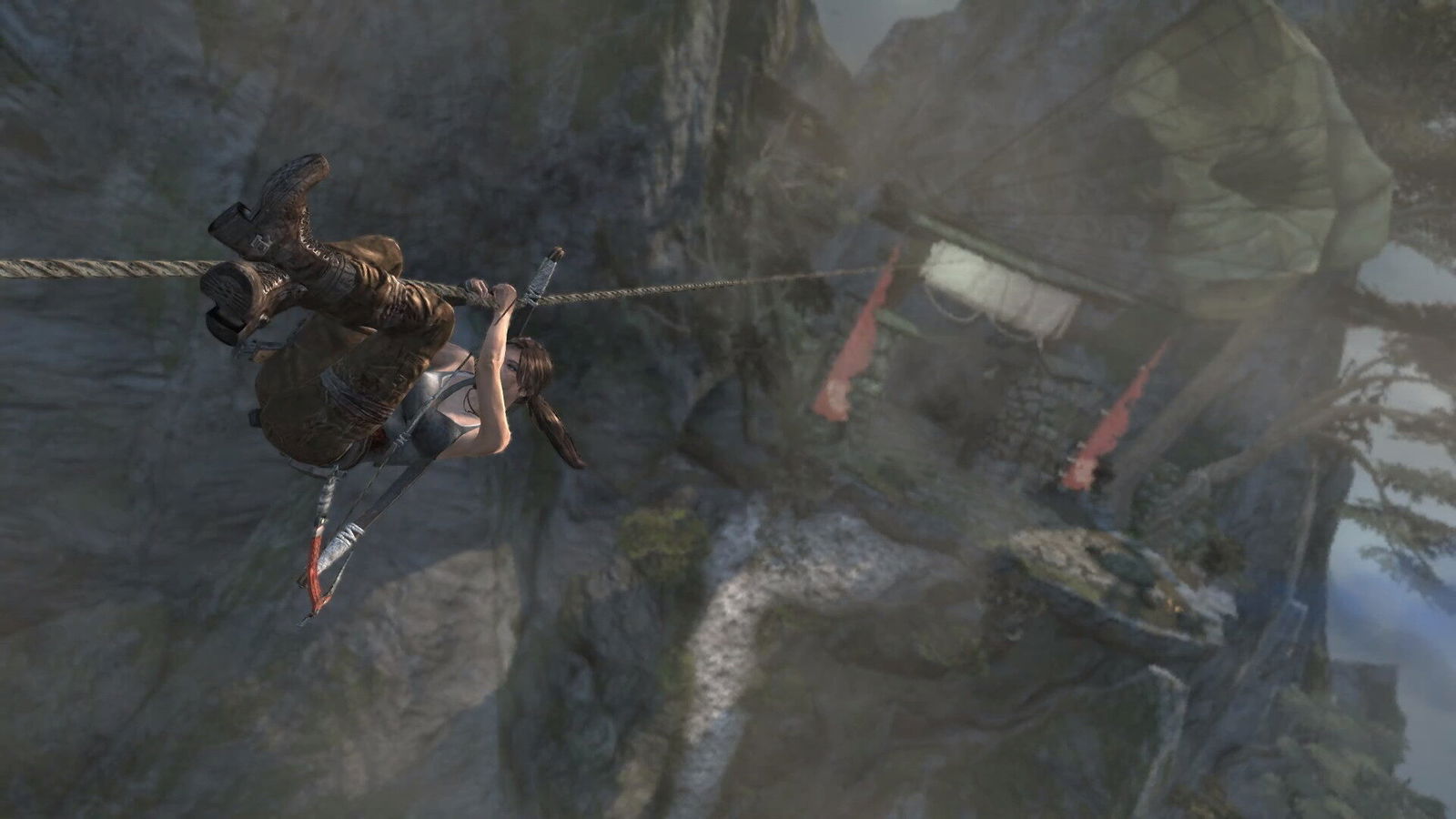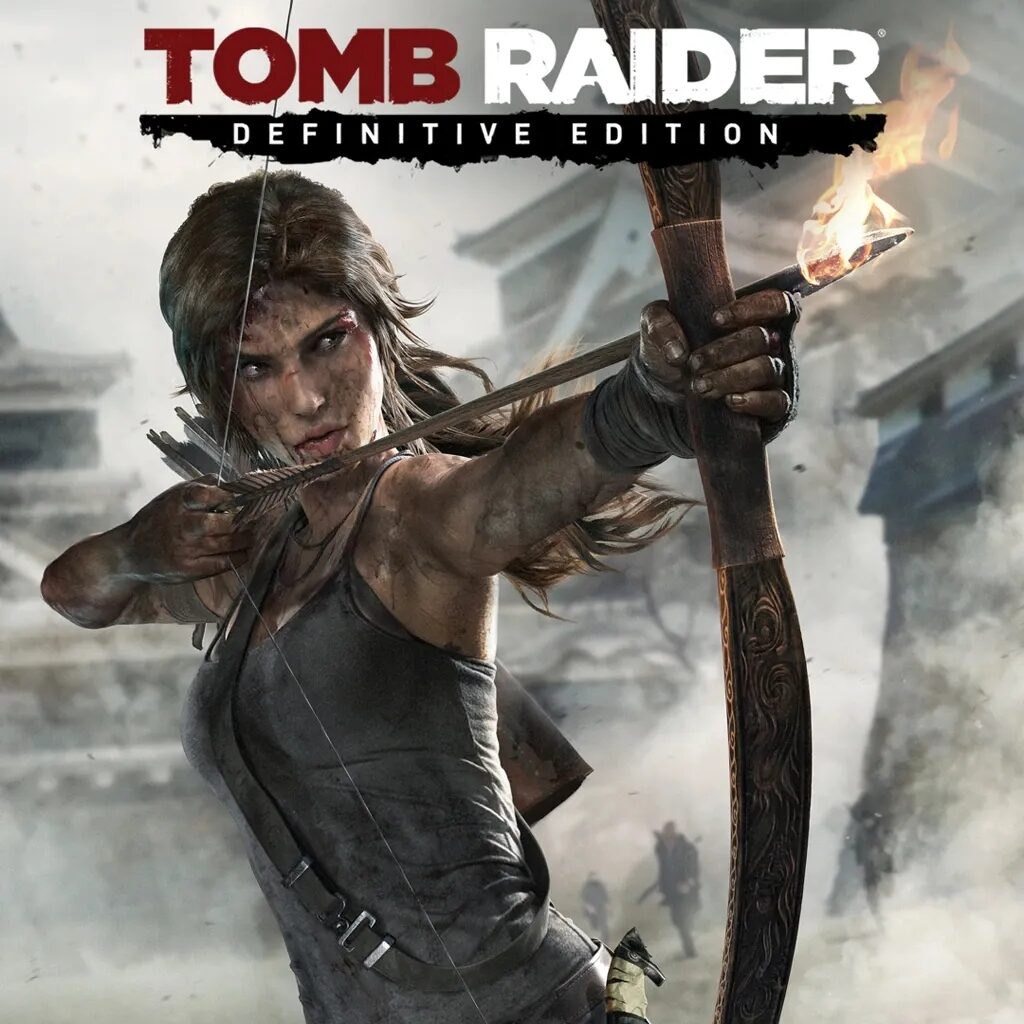It was a pleasant surprise last week to hear that Tomb Raider: Definitive Edition was receiving a shadow drop for the Nintendo Switch family of systems. The 2013 reboot of Lara Croft’s adventures was a highlight of the late PS3 era (and the early PS4 era, thanks to a capable yet too-soon remaster), and with a second season of Netflix’s excellent animated adaptation coming soon to build off this “Survivor” timeline, it’s a perfect time to go back to the origin.
Now, as a late PS3/early PS4 game, one might assume Tomb Raider should work well on the Switch 2. The reality is… slightly more complicated. Let’s start by taking a look at the positives.

Tomb Raider: Definitive Edition arrives on Nintendo’s shores for the first time in a truly definitive package of content. The DLC and bonus material from other editions, including costumes and a robust main menu gallery, are all included; hell, even the multiplayer mode is here.
The actual game itself holds up pretty well for the most part. Lara’s journey from being shipwrecked to scrapping for survival to taking on supernatural samurai guardsmen is still a thrilling array of exploration, puzzles, shoot-outs, and quick-time events. It’s been a while since QTEs dominated the industry, so they almost feel quaint sometimes.
“For Tomb Raider: Definitive Edition, however, we shouldn’t be settling for the same ‘coat of paint’ approach.”
…when you’re not being penalized with horrific snuff-film cutscenes when you fail, anyway. Cutscenes put Lara through an absolute wringer at the hands of the cultists on the island or by nature itself. I related to Conan’s horrified response in 2013, and this aspect is still unsettling today.
Gameplay-Lara has a compelling arc; however, she gradually gains an arsenal of weapons, gear, and upgrades to deal with manmade and natural threats along her journey. I seemed to recall the journey being a little more open back in the day. Maybe it seems less so because of the onslaught of open-world games over the last decade, or maybe I misremembered, but either way, solving puzzles and dispatching goons is as thrilling now as it was back then.
Now, onto the more complicated aspects.

Tomb Raider has fallen into a bit of an unfortunate rut. Aside from the aforementioned Netflix show, the series is stagnated, and rumours of a new upcoming game which would meld the timelines and move Lara into the future have been dying on the vine since Square Enix gave their western studios away to Embracer for a song. Since then, fans have been offered up a series of passable ports from the original, classic era in two budget collections, both handled by Aspyr.
The PS1-era remasters are a coat of paint on a janky old jalopy, and that’s essentially what the old guard fans want; while I have my issues with those collections, I can appreciate that they were left in a faithful format. For Tomb Raider: Definitive Edition, however, we shouldn’t be settling for the same “coat of paint” approach.
“Tomb Raider: Definitive Edition runs well on the Nintendo Switch 2.”
Tomb Raider: Definitive Edition runs well on the Nintendo Switch 2. It’s a 2013, PS3-era game, and Nintendo’s most cutting-edge piece of tech to date, so that should be a no-brainer. But that’s about it: it runs well, not great. It runs at 60fps docked and comparably in handheld mode, but there’s a bigger hit to graphic fidelity than I would have expected for a game this old on hardware this good.
I can readily accept this trade-off in handheld mode, but it’s disappointing in docked mode, where it should shine as much as the PlayStation 4 edition. If NieR:Automata had a great Switch 1 port three years ago, there’s really no excuse for Tomb Raider to underperform on the Switch 2 now. It’s not unplayable by any means, but I was nonetheless somewhat disparaged by some cut corners, and I’m typically more lenient when it comes to graphical fidelity. It looks great in motion, but if you stop to smell the flowers, you’ll find the seams and duct tape.

I wager it comes down to priorities. I don’t know what kind of production schedule Aspyr had to put this remaster together, but from an outside perspective, it’s clear they really should have focused on Tomb Raider‘s core game experience.
Having multiplayer is nice, sure, but I can’t foresee that online matchmaking is going to be tenable for very long. Gyro controls are a neat touch, but all they really accomplish is a superficial rotation effect on certain menus—they can’t even be used for aiming weapons Zelda-style, as of publication time. Perhaps most interesting of the new bells and whistles is support for the Joy-Con 2’s mouse controls. Or at least, they’re most interesting on paper; in practice, they’re a mess to control.
Another aspect that should’ve been moved much further down the priority chart? The Switch 1 edition. Again, it should be feasible for Tomb Raider to run pretty well on the previous generation hybrid console, but at this point, it seems it would’ve proven more prudent to focus on the Switch 2 edition and really make it impressive. This feels like a half-cooked Switch 1 port, not a representative example of the Switch 2’s capabilities.

At one point, while Lara is crawling across a rope bridge, dangling over a long fall, the game simply gave up on animating her. She slid along the rope as though she were a tram car, robbing any suspense from an otherwise desperate moment. I would happily have thrown multiplayer, gimmicky motion controls, and a previous-gen edition on the pyres of Yamatai for a more cohesive edition of a 12-year-old game that skips glitches like that.
Luckily, Tomb Raider: Definitive Edition is a downright steal on Switch 2, at an MSRP of $20 USD. While I wanted more core functionality out of this port and less wasted effort on gimmicks, it was mostly a blast to revisit the start of Lara’s Survivor era, and gameplay-wise, it’s a great fit for the handheld mode. I’d even like to see the remaining two installments follow. But please, please just give Lara time to get ready before rushing out yet another “just good enough” port—Lady Croft, and her fans, deserve better.





